On our remote, community-driven partner farms in Eastern Nepal, regenerative ecological philosophies are built into farming practices, passed down over multiple generations. This is why we often say that with or without certification, (although we prefer certification for our farms), Nepal’s highland, small-holder farms intuitively meet and maintain organic standards and sustainable farming practices.

How do they do this? Well, geographically isolated from much of the world market, and even most of the country, our partner farmers aren’t in the business of industrial tea production. This means that Nepali highland farmers don’t rely on inorganic materials, pesticides, insecticides and chemical fertilizers, and industrial mono-cultural farming practices – mainly because of the costs incurred in purchasing and transporting these supplies over such great heights and difficult terrains. Instead, many of our partner farmers leverage their intimate knowledge of the land, farming and harvesting traditions, and organic agricultural inputs refined over generations, to produce a consistent, high-quality supply of fresh tea leaves.
So while most of the world’s industrial farms are now adopting regenerative agriculture, Nepal’s high-altitude farmers have long-practiced its main principles, which are:
- Soil and water conservation,
- Conservation of soil biodiversity,
- Holistic farm designs to best suit craggy, mountainous land-formations and organically produce the best yield.
- Bio-sequestration, a process of priming the soil to increase its capacity to hold onto Carbon Dioxide.
It has been a priority for Nepal Tea Collective to support and sustain these practices so that farmers don’t have to resort to industrial farming inputs like GMO seeds, chemical fertilizers, pesticide and insecticides, that produce short bursts of high-yields but ultimately destroy the soil, water, and the environment.
In this process, we also make sure we connect our highland farmers to international best practices in regenerative farming. This exchange of knowledge and practice is crucial in our shared effort to rescue our world from our current climate crisis.
Regenerative Agriculture in Practice looks like :
Sustainable practices very often draw from indigenous wisdom that emphasize limited intervention and respect for the land and the community. Not taking more than you need from the natural world is one of the core tenets of such practices, along with doing the work of custodians to maintain healthy ecosystems for all forms of life.
Regenerative agriculture draws from these very philosophies to improve and maintain the health of soil and water systems. On our tea farms, regenerative agriculture in practice looks like:
Low Tilling of the Earth:
Drawing from philosophies of Permaculture, Regenerative Agriculture emphasizes low to no interventions on the farm. This means that Regenerative practices encourage farmers not to overly till the land. According to the USDA Economic Research Service, low levels of disturbance to the soil can lead to drastic improvements in soil health over time.
This is because tilling the soil often breaks up fungal communities that regulate the circulation of nutrients and water through the soil, and also interrupts soil integrity, causing increased soil erosion, loss of soil fertility and inability to retain water over time. Besides, tilling the soil also releases the stores of Carbon Dioxide from the soil, into the atmosphere. Heavy tilling, conducted along with the use of inorganic inputs, can cause a high level of run-off, causing contaminated water to infiltrate surrounding soil and river systems and ultimately destroying natural habitats for humans and wildlife alike.
Unlike on industrial farms, where large tractors are employed to till the soil, preparing it for large plantations of mono-culture crops like corn, tea farms don’t require much tilling. Tea plants can take up to seven years to mature, after which our traditionally processed tea leaves only require farmers to pluck the top leaf and bud from the tea plants. Since no root materials are required, the soil fostering tea plants are often left undisturbed for decades.
Soil Microbiology and Fertility:
Application of organic composts, along with a healthy mix of crop varieties, encourages fungal and bacterial growth in the soil. These concentrations of healthy fungal and bacterial networks are what we call ‘microbiology’, and these organisms contribute to healthy circulations of essential soil nutrients. This practice increases soil fertility, which means that crops develop better root structures that can more easily take in nutrition and water from the soil.
Our partner farms in Eastern Nepal have an abundant supply of organic compost and fertilizer, because along with tea farming, many farmers raise cattle and livestock. Because Nepal has long been an agricultural economy, with most of Nepali people’s income relying on agriculture, the practice of creating organic, home-made fertilizers, organic remedies for the prevention of diseases and pests, and high-quality composts have been refined over the centuries in this region. Whats more, Nepali farms often tend to cultivate a multitude of crops side by side, and you’ll often find tea farms that are framed by old-growth trees, herbs, flowers, and vegetables, enhancing ecological habitats and the quality of even the toughest and least arable mountain soils!
Bio-sequestration:
Bio-sequestration is one of the most important aspects of regenerative agriculture – a process that reduces the levels of Carbon Dioxide in the atmosphere by increasing the soil’s capacity to hold onto CO2. Lowering CO2 levels is crucial in our era of escalating climate change, and the ability of farmed lands to hold onto CO2 has been a core focus of any regenerative agricultural practices.
The factors that enable soil to most effectively hold onto Carbon Dioxide are intertwined with soil health and fertility. Moreover, well managed cattle grazing practices have been shown to not only improve the health of farm animals, but also improve carbon deposits in the soil. While many livestock farmers in Eastern Nepal create herding and grazing practices to organically support the health of their cattle, effective grazing techniques to improve fertility and carbon sequestration are yet to co-exist with our other highly effective regenerative practices.
On the other hand, because tea plants take so long to mature and allow soils they are rooted in to develop higher carbon deposits along with microbial and fungal deposits, tea plants are highly adept at carbon sequestration. The Collective has used this wisely: with every package of our teas sold, we plant one tea sapling. Each one of our tea saplings can sequester up to 5lbs of CO2 in the soil, with a mature tea tree sequestering up to 50lbs of CO2 in the soil and away from the atmosphere – where CO2 has its worst impacts.
Moving Forward: Creating Data-Driven Regenerative Agricultural Systems
Many of our high-land farmers intuitively understand and practice regenerative agriculture, drawing from their indigenous knowledge of their land, but these practices and systems are often unrecorded. Left to time, migration, and the influence of industrial production, it is highly likely that this knowledge can evaporate.
We believe that keeping record of sustainable and regenerative practices can not only create holistic, effective agricultural designs that incorporate highly productive agricultural best practices across the board, but also provide data-driven proof of long-term health and conservation that encourages producers around the world to practice regenerative, conservation focused practices.
To this end, the Collective is hard at work to employ digital and data-driven tools, monitoring tea yield, levels of food loss and waste, organic content in both the soil and the tea leaves, and closely monitoring levels of carbon sequestration in our soils. We hope that by recording our progress in conserving our soil, water and air, while crafting high-quality and delicious teas, will empower our partner farms to continue their best practices, all the time encouraging farmers and producers everywhere to take steps towards regenerative practices.





